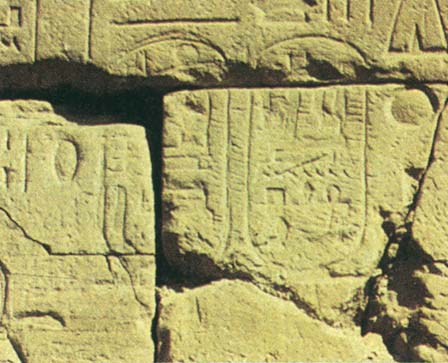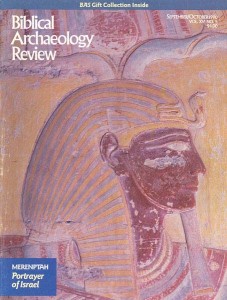Usurped Cartouches Key to Discovery
Sidebar to: 3,200-Year-Old Picture of Israelites Found in Egypt

The inscriptions that accompany the reliefs on the Karnak wall actually tell us which pharaoh the scenes glorify, but the vital clues have been partially destroyed and hence long overlooked. The key lies in the inscriptions’ cartouches—the oblong rings that enclose the pharaoh’s fourth and fifth names (the prenomen and nomen)—which have been usurped, that is, partially erased and recarved with the name of a later pharaoh. Frank Yurco successfully identified the sequence of usurpation by discovering that the original cartouches of Merenptah (1212–1202 B.C.E.) had been usurped by Amenmesse (1202–1199 B.C.E.), whose cartouches were in turn usurped by Sety II (1199–1193 B.C.E.). The usurpation process consisted of shaving and then scoring the earlier cartouche to improve the hold of a coat of plaster, on which the new cartouche could be carved. Fortunately for history, this process failed to entirely obliterate the earlier cartouches, because the shaving did not reach the full depth of the original engraving and the plaster has fallen off in places.
Already a library member? Log in here.
Institution user? Log in with your IP address.

